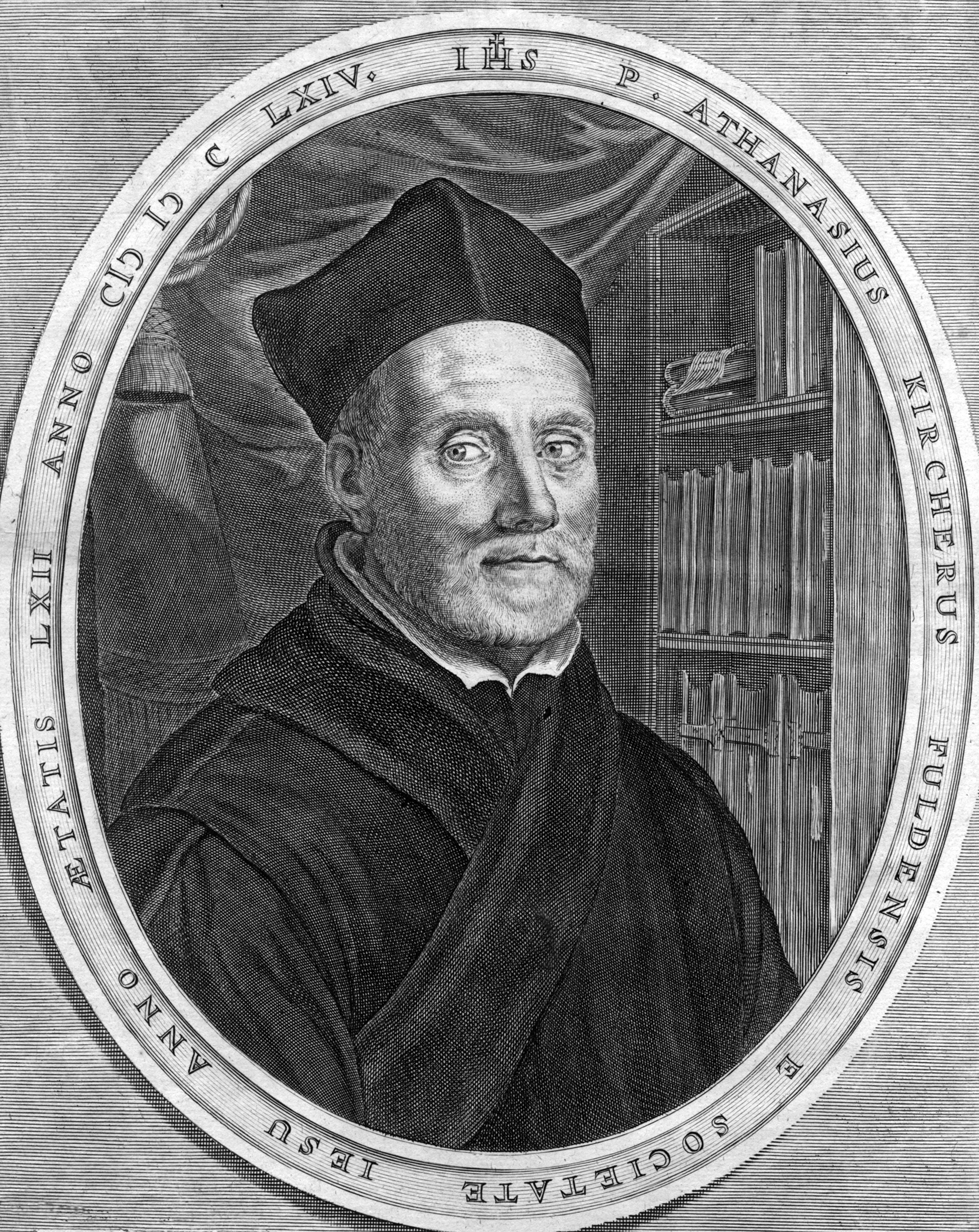A renown polymath, Kircher’s research encompassed a variety of disciplines including geography, astronomy, mathematics, language, medicine, and music, bringing to each a rigorous scientific curiosity girded in a mystical conception of natural laws and forces. His methods ranged from the traditionally scholastic to the boldly experimental. He once had himself lowered into the crater of Vesuvius to observe its features soon after an eruption. Another example of his scientific originality is seen in the two chapters of his book Ars Magna Lucis et Umbrae devoted to bioluminescence, where his scientific observations included an experiment to test whether firefly extract could be used to light houses. He also constructed the first known Aeolian harp, a stringed instrument that became popular in the late 18th and 19th centuries.
Athanasius Kircher
